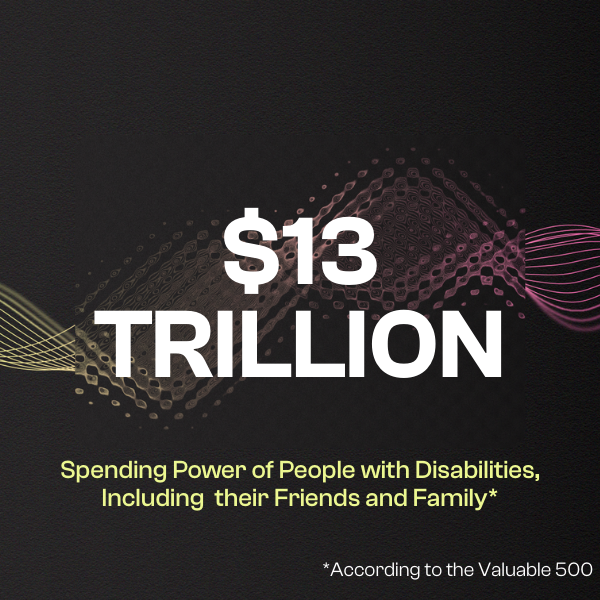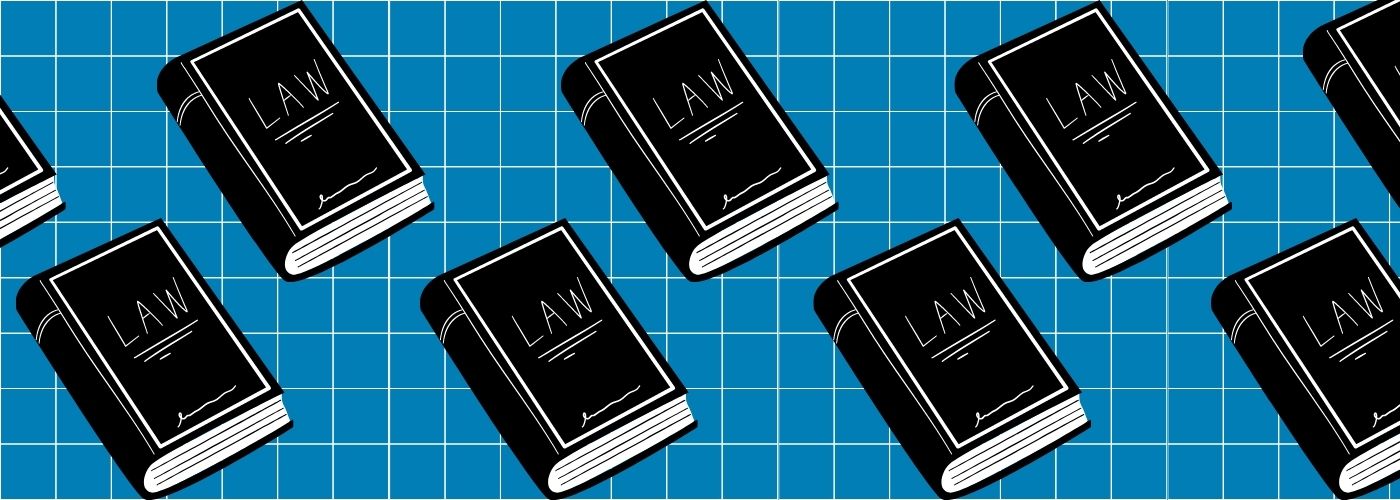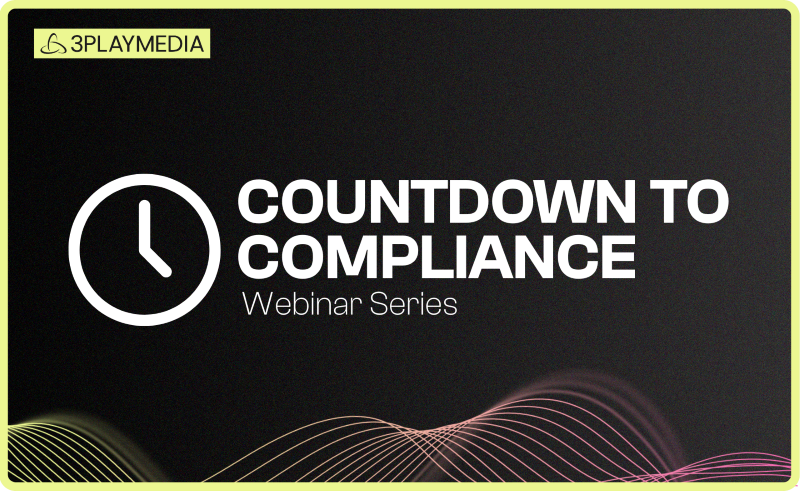- Legislation & Compliance
ADA Title II: What Public Entities Need to Know in 2026
•

With compliance deadlines for ADA Title II swiftly approaching, it is crucial for public entities to understand the scope of this ruling and the steps they can take not only to achieve compliance for their digital content, but also to maintain it in the long term.
Read on to learn what Title II entails, what digital content is covered, and the steps your organization can take to maintain compliance.
Key Takeaways
- ADA Title II is the section of the Americans with Disabilities Act that prohibits discrimination against people with disabilities in all programs, services, and activities provided by state and local governments (this includes public colleges and universities).
- Organizations serving a population of 50,000 or more have until April 24th, 2026, to meet Title II requirements; organizations with less than 50,000 have until April 24th, 2027.
- ADA Title II now requires public entities to make their digital content compliant with WCAG 2.1 Level AA, a set of guidelines that ensures web content is perceivable, operable, understandable, and robust for people with disabilities.
Table of Contents
- ADA Title II: Background
- What is the Americans with Disabilities Act (ADA)?
- Who is Covered under ADA Title II?
- ADA Title II Compliance Deadlines
- Consequences of Non-Compliance with ADA Title II
- ADA Title II and WCAG 2.1 Level AA
- ADA Title II for Higher Education
- Video Accessibility for ADA Title II
- Next Steps for Title II Compliance
ADA Title II: Background
The U.S. Department of Justice’s final rule on Title II of the Americans with Disabilities Act (ADA) has made one thing clear: digital accessibility is no longer optional for public entities.
In 2025, public universities, community colleges, and other public entities are facing a new reality, as the vague legal expectations of the past have been replaced by a concrete, enforceable standard.
While these new accessibility requirements might seem like a burden, they are actually a significant opportunity. According to the CDC, over 70 million adults report having a disability in the US alone.
Additionally, the Valuable 500 found that people with disabilities, as well as their friends and families, have $13 trillion of spending power.
By making your digital content accessible, you don’t just comply with the law, you unlock a brand-new audience.

This blog is being published in tandem with the recording of 3Play Media and TPGi‘s co-sponsored webinar, “ADA Title II: What Public Entities Need to Know About Digital Accessibility“. For a deeper dive into this topic, this webinar can be viewed for free on demand!
What is the Americans with Disabilities Act (ADA)?

Definition
The Americans with Disabilities Act (ADA)
The ADA is a civil rights law that prohibits discrimination against individuals with disabilities in all areas of public life, ensuring equal opportunities for all.
The ADA guarantees that people with disabilities have the same opportunities as everyone else to participate in the mainstream of American life.
Enacted in 1990, the ADA initially focused exclusively on the physical world, for example, installing a wheelchair ramp at the entrance of a public building.
However, as the world became increasingly digital, the ADA expanded to include websites, online video, and other forms of digital content. The ADA now ensures that all public entities, regardless of size, must make their digital presence accessible to all.
The ADA is broken down into five titles:
Title I: Prohibits employment discrimination and requires reasonable accommodations for people with disabilities.
Title II: Bans discrimination in all programs and services of state and local governments.
Title III: Requires private businesses and public spaces to be accessible to individuals with disabilities.
Title IV: Mandates telecommunications relay services and closed captioning for federally funded PSAs
Title V: Covers miscellaneous provisions, including the ADA’s relationship to other laws and protection against retaliation.
In this article, we will be focusing on Title II and how it applies to digital content and services.
Who is Covered under ADA Title II?
ADA Title II applies to all state and local governments, including their departments, agencies, and any other public entities. This means the law covers every program, service, and activity they offer, regardless of whether they receive federal funding.
To take public universities and community colleges as an example, this includes everything from a university’s website and digital learning platforms to online course content and public-facing video materials.
According to ada.gov, other examples include:
- Public Transportation
- Recreation
- Health care
- Social services
- Courts
- Voting
- Emergency services
Essentially, if a government agency at the state or local level offers a program or service, it must be accessible to everyone.
What is Covered under ADA Title II?
In addition to covering physical spaces like government buildings, public schools, and courthouses, Title II includes all digital content, which is the focus of the new rule.
Examples of digital content and services that fall under this umbrella include (but are not limited to):
- All public-facing websites and mobile applications
- Online forms and application portals (e.g., for licenses, benefits)
- Digital documents and publications (e.g., PDFs, reports, brochures)
- Official social media posts and announcements
- Video and audio content (which must have captions or transcripts)
- Any digital service or content provided through a third-party contractor or vendor
ADA Title II Compliance Deadlines
Deadlines for Title II of the ADA are dependent on the size of the jurisdiction the public entity resides in.
Erik Ducker, Sr. Director of Product Marketing at 3Play Media, lays out these deadlines (and who they apply to) in this video, clipped from our ADA Title II webinar:
Consequences of Non-Compliance with ADA Title II
Failing to comply with the digital accessibility requirements of ADA Title II can expose public entities to significant risks, from legal action to financial penalties and reputational damage.
Financial and Legal Penalties
- Lawsuits and Fines: The Department of Justice (DOJ) can file lawsuits against non-compliant entities. Civil penalties can be substantial, with fines possibly exceeding $100,000, according to the ADA.
- Costly Settlements: While most cases are settled before going to court, these settlements often require the entity to pay for the plaintiff’s legal fees and implement expensive accessibility overhauls. An example of one such settlement is National Association of the Deaf v. Harvard.
- Loss of Funding: In cases involving public schools and universities, a finding of non-compliance by the Office for Civil Rights (OCR) can lead to a loss of federal funding.
Reputational Damage
- Damaged Reputation: Non-compliance can lead to negative publicity and public backlash, creating the perception that the institution is not inclusive or welcoming to people with disabilities.
- Exclusion of Audience: Inaccessible digital content excludes a significant portion of the population. A commitment to accessibility, on the other hand, demonstrates good governance and public service, fostering a more inclusive and engaged community.
ADA Title II and WCAG 2.1 Level AA
The new ADA Title II rule provides clarity by adopting a specific technical standard for digital accessibility. Public entities must now make their digital content and services compliant with Web Content Accessibility Guidelines (WCAG) 2.1 Level AA.
WCAG is an internationally recognized set of guidelines for making digital content accessible to people with disabilities.
The “2.1” refers to a specific version that includes new success criteria for mobile devices and users with low vision. “Level AA” is the conformance level that dictates the necessary standards you must meet.
You can read more about the WCAG 2.1 requirements and distinction between levels on W3C’s website.
WCAG 2.1 is built on four core principles that guide digital content accessibility: perceivable, operable, understandable, and robust; forming the acronym “POUR”.
In the clip below (also from our Title II webinar), David Sloan, Chief Accessibility Officer at Vispero, breaks down the four principals of WCAG 2.1.
ADA Title II for Higher Education
For public universities and community colleges, the new ADA Title II rule brings a significant shift: digital accessibility is now a clear, legal requirement, not just a best practice.
The new rule for public colleges and universities mandates a proactive approach, requiring all digital content to be accessible from the outset, not only when an accommodation is requested.
This is important because the majority of students with a disability do not report it to their college or university, according to the National Center of Education Statistics.
This approach is critical to ensuring an equitable learning experience for all students, whether or not they’ve officially requested accommodations.
What Content is Covered?
The rule applies to every digital service, program, and activity your institution provides, affecting a wide range of content.
This includes:
- University Websites: Main university sites, department pages, and alumni portals.
- Online Learning Platforms: All content within Learning Management Systems (LMS) like Canvas or Blackboard.
- Course Materials: Lecutre videos, Digital documents, presentations, and syllabi.
- Third-Party Content: Any external content or tools you provide to students through a contractual, licensing, or other arrangement.
This move toward “accessible by default” impacts not just IT departments, but every faculty member and staff creator who produces or manages digital content.

Solutions
Title II Compliance for Higher Education
An established leader in higher education accessibility solutions, 3Play Media is your partner in creating a truly inclusive learning environment. Learn more:
Video Accessibility for ADA Title II
For public entities, video is a powerful communication tool, but under the new ADA Title II rule, it is also a major compliance concern.
The rule mandates that all video content, from online courses and training materials to public meetings and social media posts, must be made fully accessible to meet WCAG 2.1 Level AA standards.
To comply, your videos need to include the following elements:
- Accurate Captions: Both live and pre-recorded videos must have accurate, synchronized captions to provide access for people who are deaf or hard of hearing. These captions must include not only spoken dialogue but also sound effects and musical cues.
- Audio Description: Pre-recorded videos that contain important visual-only information, such as on-screen text, charts, or actions, must have an audio description track. This separate narration describes the key visual details for users who are blind or have low vision.
- Transcripts: A text transcript of the video’s dialogue and important sounds is a best practice. This provides an easy-to-read, searchable, and shareable version of the video’s content, benefiting all users (and boosting SEO!).
Read more about ADA Title II requirements for video:
The Role of Responsible AI in Video Accessibility
From vast libraries of pre-recorded lectures to ongoing live events, the volume of content can make full compliance seem overwhelming. This is where AI becomes a powerful tool, but it’s crucial to understand the difference between simply using AI and using it responsibly.
AI-powered solutions can dramatically accelerate the process by generating an initial layer of accessibility. This includes:
- Automated Captioning: AI’s Automatic Speech Recognition (ASR) can quickly produce captions for thousands of hours of video, providing a strong starting point for remediation.
- AI-Scripted Audio Description: Generative AI and computer vision can analyze a video’s visual track to provide a rough script for audio description.
However, relying solely on AI is a significant risk. The new ADA Title II rule mandates compliance with WCAG 2.1 Level AA, which requires a high level of accuracy that AI alone often cannot meet.
3Play Media’s 2025 State of ASR Report found that in higher education, the top AI-powered engines still had a word error rate of 6.4%*. That equates to around 1 in every 16 words being incorrect.
That’s why 3Play Media utilizes a “human-in-the-loop” approach to ensure high quality, while drastically increasing efficiency and affordability.
This method combines the speed and scale of AI with the precision of expert editors, giving you a scalable solution for all your video accessibility needs. Using this method, 3Play can guarantee 99% accuracy for video captions—well above the 93.6% accuracy achieved by using AI alone.
* This percentage represents the average of the top 4 ASR engines that were tested.
Next Steps for Title II Compliance
Navigating the new ADA Title II rule can feel overwhelming, but your institution doesn’t have to tackle it alone.
An established leader in higher education accessibility solutions, 3Play Media provides a scalable and reliable way to ensure all your video content meets the new WCAG 2.1 Level AA requirements.
Our “human-in-the-loop” approach delivers high-quality captions, transcripts, and audio description, giving you a clear roadmap to compliance.
For a deep dive into ADA Title II, requirements, deadlines, solutions, and more, watch our free webinar, now available on demand:
About the author
Share this page
Related Posts
-
 Read more: ADA Update: Title II’s Final Rule Clarifies Captioning and Audio Description in Higher Education
Read more: ADA Update: Title II’s Final Rule Clarifies Captioning and Audio Description in Higher Education- Legislation & Compliance
ADA Update: Title II’s Final Rule Clarifies Captioning and Audio Description in Higher Education
-
 Read more: Everything to Know About the Americans with Disabilities Act (ADA) and Video Compliance
Read more: Everything to Know About the Americans with Disabilities Act (ADA) and Video Compliance- Legislation & Compliance
Everything to Know About the Americans with Disabilities Act (ADA) and Video Compliance
-
 Read more: U.S. Laws for Video Accessibility: ADA, Section 508, CVAA, and FCC Mandates
Read more: U.S. Laws for Video Accessibility: ADA, Section 508, CVAA, and FCC Mandates- Accessibility
U.S. Laws for Video Accessibility: ADA, Section 508, CVAA, and FCC Mandates



